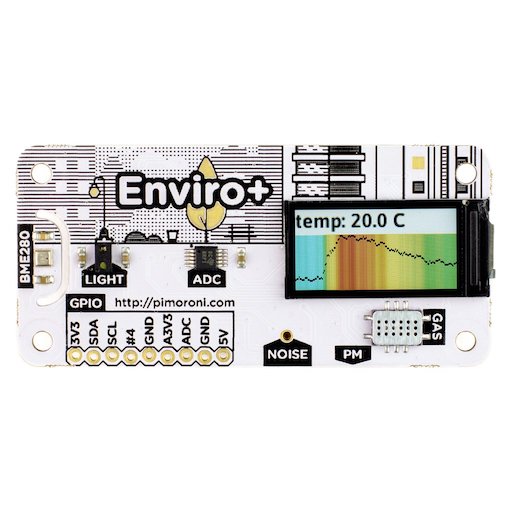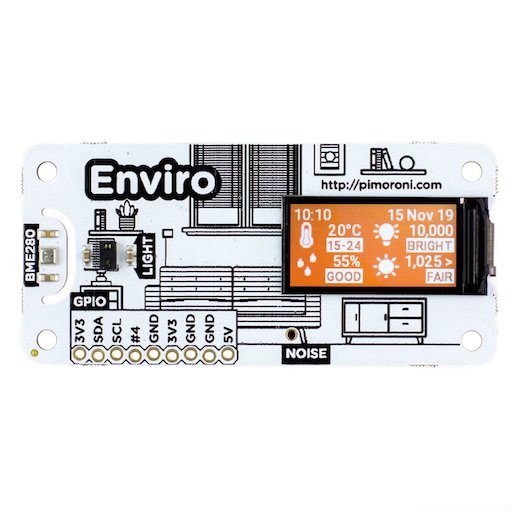Follow Standard Pimoroni Install instructions.
git clone https://github.com/pimoroni/enviroplus-pythonorgit clone https://github.com/kurayamin0/enviroplus-pythoncd enviroplus-python./install.sh
Note Libraries will be installed in the "pimoroni" virtual environment, you will need to activate it to run examples:
source ~/.virtualenvs/pimoroni/bin/activate
Note this will not perform any of the required configuration changes on your Pi, you may additionally need to:
* Enable i2c: `raspi-config nonint do_i2c 0`
* Enable SPI: `raspi-config nonint do_spi 0`
And if you're using a PMS5003 sensor you will need to:
- Enable serial:
raspi-config nonint do_serial_hw 0 - Disable serial terminal:
raspi-config nonint do_serial_cons 1 - Add
dtoverlay=pi3-miniuart-btto your/boot/firmware/config.txt
-
Firstly create a new service.
sudo nano /etc/systemd/system/<servicename>.serviceThis creates a service called whatever you wish to name the service to auto run your script. -
In this .service file you will need to add some details about the service. Below is a template, but you will need to change the directories etc as required.
[Unit]
Description=<Whatever you want to call the service eg enviroplus with virtual env>
After=network.target
[Service]
User=<username>
Group=<group>
WorkingDirectory=/home/<username>/enviroplus-python/examples/
ExecStart=/home/<username>/.virtualenvs/pimoroni/bin/python /home/<username>/enviroplus-python/examples/<scriptname>.py
Restart=always
StandardOutput=inherit
StandardError=inherit
Environment=PYTHONUNBUFFERED=1
[Install]
WantedBy=multi-user.target
- Once you've made the changes to username save the changes.
- Run the follow three commands
sudo systemctl daemon-reload
sudo systemctl enable <your_service_name>.service
sudo systemctl start <your_service_name>.service
sudo systemctl status <your_service_name>.service
You should now be fully installed and after rebooting your script should automatically run.
I've included my personal script that I am running.
-
It runs everything including PMS5003, although it doesn't include noise. The main difference between my script is that it saves the readings to a memory buffer and only writes them to the SD card every 15 minutes. I've done this to avoid constantly writing data to the SD card for increased longevity.
-
The data is saved as a .csv file named 'sensor_data' with the following headings. timestamp in D-M-Y H:M:S format, temperature, humidity, pressure, light, oxidising, reducing, nh3, pm1, pm2_5, pm10.
-
It also includes temperature compensation as found in the standard Pimoroni Scripts.

